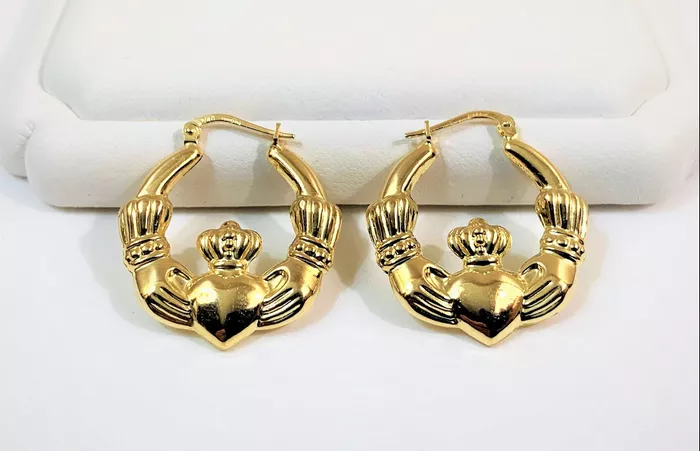Engagement rings symbolize love, commitment, and the promise of a future together, making them one of the most cherished and meaningful pieces of jewelry a person will ever wear. Among the myriad of designs available, the heart-shaped engagement ring stands out for its romantic symbolism and distinctive appearance. However, opinions on this particular style vary widely, with some questioning its elegance and others embracing its sentimental value. This comprehensive article delves into the debate surrounding heart-shaped engagement rings, exploring their history, symbolism, design considerations, and ultimately, challenging the notion of whether heart-shaped engagement rings are tacky.
Understanding the Symbolism of Heart-Shaped Engagement Rings
The heart shape has long been associated with love and affection, making it a natural choice for engagement rings. Here’s a deeper look into the symbolism behind heart-shaped rings:
Romantic Symbolism:
The heart shape is universally recognized as a symbol of love, passion, and devotion. Choosing a heart-shaped engagement ring signifies a deep emotional connection and a commitment to a romantic relationship.
Sentimental Value:
For many couples, the heart shape holds personal significance, representing shared memories, experiences, and the promise of a future filled with love and happiness.
Unique and Distinctive Design:
Heart-shaped engagement rings stand out from traditional designs like solitaires or princess cuts, offering a distinctive look that appeals to individuals seeking something unique and memorable.
Historical and Cultural Significance
The concept of using the heart shape in jewelry dates back centuries and has evolved over time:
Historical Roots:
The heart shape has been used in jewelry and art since the Middle Ages, initially as a symbol of devotion and later becoming synonymous with romantic love during the Renaissance period.
Modern Adaptations:
In the 20th and 21st centuries, jewelers have embraced the heart shape in engagement rings as a contemporary expression of love and commitment, catering to diverse tastes and preferences.
Design Considerations and Aesthetic Appeal
The appeal of heart-shaped engagement rings lies in their distinctive design and emotional resonance:
Cut and Faceting:
Achieving the ideal heart shape requires precision in cutting and faceting the diamond or gemstone to create symmetry and maximize brilliance.
Setting and Metal Choices:
Heart-shaped rings can be set in various styles, from classic solitaires to elaborate halo settings. The choice of metal (platinum, white gold, yellow gold, or rose gold) influences the ring’s overall aesthetic and durability.
Personalization and Customization:
Couples can personalize heart-shaped rings by choosing gemstones other than diamonds, adding engraving, or selecting a setting that reflects their individual style and preferences.
Addressing the Perception of Tackiness
The debate over whether heart-shaped engagement rings are tacky often hinges on subjective opinions and misconceptions:
Personal Preferences vs. Social Perception:
Individual preferences for engagement ring styles vary widely. What one person finds tacky, another may find charming and endearing.
See Also: When Not to Wear Engagement Ring?
Cultural Influences:
Cultural norms and trends influence perceptions of engagement ring styles. In some cultures, heart-shaped rings are celebrated for their romantic symbolism, while in others, they may be less traditional.
Quality and Craftsmanship:
The perceived tackiness of an engagement ring is not solely determined by its shape but also by the quality of the diamond or gemstone, craftsmanship, and overall design aesthetic.
Dispelling Myths and Embracing Diversity
Ultimately, the decision to choose a heart-shaped engagement ring should reflect personal values, preferences, and the couple’s unique love story:
Celebrating Individuality:
Engagement rings should be a reflection of the couple’s relationship and personal style. Embracing diversity in ring designs encourages creativity and allows couples to find a ring that resonates with their shared vision for the future.
Redefining Beauty and Elegance:
Beauty is subjective, and elegance can be found in a variety of designs, including heart-shaped engagement rings. The key lies in choosing a ring that holds sentimental value and symbolizes the couple’s commitment to each other.
Educating and Empowering Consumers:
Providing information about different engagement ring styles empowers consumers to make informed decisions based on their preferences, values, and budget.
Conclusion
Heart-shaped engagement rings are a testament to love, romance, and individuality, offering couples a distinctive way to symbolize their commitment to each other. While opinions on their aesthetic appeal may vary, the sentiment behind choosing a heart-shaped ring is universally understood: a declaration of enduring love and a promise of a future together. By exploring the history, symbolism, and design considerations of heart-shaped engagement rings, this article aims to challenge stereotypes and encourage appreciation for the diverse expressions of love in jewelry.
In conclusion, the beauty of heart-shaped engagement rings lies not only in their romantic symbolism but also in their ability to capture the essence of a couple’s unique love story. As perceptions evolve and cultural norms shift, embracing diverse engagement ring styles—including heart-shaped designs—celebrates the richness of human relationships and the enduring power of love.

